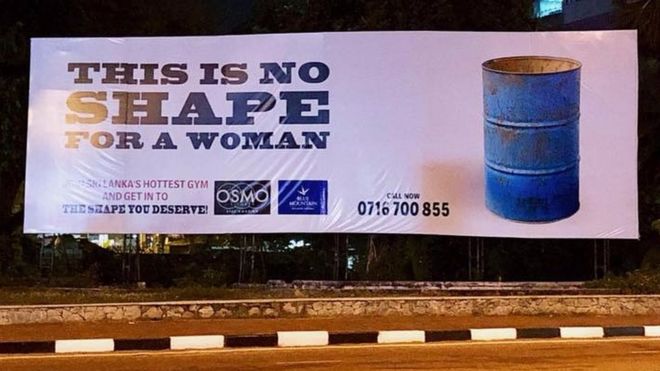Marketing and Feminism
Introduction
Marketing
and feminism gravitate in two different, yet allied fields. Therefore, they
have often intersected. One such instance was when issues arose while
segmenting consumers according to the binary genders and stereotypical gender
assumptions that made women inferior to men were made. (Catterall, Maclaran
& Stevens, 2013) Throughout time, marketing campaigns that utilized women
as mere objects evoked. In light of the situation, many feminists have pointed
out the ill-portrayal of women in advertisements, the illusion of feminism in
organizations which is erroneously crafted and the problematic nature of them.
Marketing has the ability to create normality as many women try to identify with
similar figures around them. As this could potentially inflict psychological
damage upon women and limit them to a stereotypical role, marketers have been
accused as the causers of this situation and not conducting their duties
responsibly. Consumers have even gone on to boycott brands that have
communicated anti-feminist norms with them and many organizations have gone out
of business because of such marketing campaigns. Therefore, a pressing need for
marketers to further educate themselves regarding feminism based marketing has
arisen at recent times.
Review of Literature
(Maclaran,
2015) Eloquently summarizes the four waves of feminism and their intersection
with the marketing sphere. The first wave of feminism emanated in the 1850’s was
driven by individuals such as Elizabeth Cady and Amelia Bloomer who believed
that marketing was serviceable and could be used to create awareness regarding
the movement. This is evident in Cady’s Fairy Soap advertisement. Conversely,
the second wave of feminism was caused by many things including sexist
marketing campaigns by brands such as Van Heusen and Mr. Leggs in the 1950s and
1960s. The succeeding movement that occurred in the 1990s elevated the topic’s
popularity and relevance in many fields including marketing. It gave rise to
many campaigns that aimed to empower women and break free from female
stereotypes. This era saw the birth of “femvertizing”, feminism harnessed in
advertising, (Dan,
2018) the bandwagon many marketers jumped on. The most recent wave of feminism
was predominately driven by the internet, which accommodated many women and men
alike to manifest their thoughts on women’s portrayal in marketing campaigns.
Upon thoroughly discussing the aforementioned four movements, (Maclaran, 2015) states that many components of marketing can benefit from feminist theorizations and states that it should be used more frequently.
Upon thoroughly discussing the aforementioned four movements, (Maclaran, 2015) states that many components of marketing can benefit from feminist theorizations and states that it should be used more frequently.
In like manner, (Hearn & Hein, 2015) elucidates the impression that the root causation for the anti-feminist portrayal of women in advertising and such is feminist theorizations being overlooked, and similarly suggests that feminist theorization should be used more frequently in the marketing sphere. The basic knowledge provided in feminist knowledge could undoubtedly provide marketers with the guidelines to what is and is not acceptable in the portrayal of women. Upon observation, at recent times, advertisements done by recognized marketing firms have sparked much negative reception towards the Sri Lankan marketing community. Therefore, it is evident that the conclusion proposed, feminist theory needs to be more abundantly used in marketing, is true in the sense that it would avoid the backlash received by anti-feminist advertisements as they would be more favourably crafted.
(Hearn & Hein, 2015) also go on to discuss the causations of the issues that have arisen by the incorrect harnessing of feminism in marketing. The first, is the key focus of marketing campaigns gravitating around empowering women have seldom been empowering woman. It has been increasing brand awareness and revenue. The second, is the disproportionate spread of gender power in societies worldwide. The third, is the gender assumptions made while segmenting consumers.
To
criticize the aforementioned causations presented, the first is evidently true;
as a marketer’s goal in crafting a campaign is undoubtedly achieving the sales
objectives set by the organization. Therefore, marketers would use material
that they believe would create awareness about the product they are selling and
the concerns about the ethical nature of the content would only be a secondary
concern. one of the most condemned femvertizing campaigns up to date,
The second is a principle has been so since ancient times; women were limited to their home making role. The third reason, is the primary cause of gender based stereotype advertising. While segmenting consumers according to the gender demographic, marketers have used the fundamental male and female categories. By viewing these genders as polar opposites, many products were marketed differently to the two genders. However, gender has expanded its limitations in the contemporary world and it should instead be viewed as a spectrum because it is difficult to make distinctions between genders. If this was taken into account, problematic stereotypical portrayal of women in advertising would be inexistent.
The second is a principle has been so since ancient times; women were limited to their home making role. The third reason, is the primary cause of gender based stereotype advertising. While segmenting consumers according to the gender demographic, marketers have used the fundamental male and female categories. By viewing these genders as polar opposites, many products were marketed differently to the two genders. However, gender has expanded its limitations in the contemporary world and it should instead be viewed as a spectrum because it is difficult to make distinctions between genders. If this was taken into account, problematic stereotypical portrayal of women in advertising would be inexistent.
Figure A- Source:
www.glennhorowitz.com/images/made/images/dobkin/4657989%20Stanton_225_317.jpg
Figure B - Source:
https://thesocietypages.org/socimages/files/2011/07/Wear-a-tie-in-bed.jpeg
Figure C – Source: https://blogger.googleusercontent.com/img/b/R29vZ2xl/AVvXsEhxNYCxIedTD97gv0mQDS-pyi3BqwbTeogyN1IefM9LTwX8tfG8QTDxVuk0hoANTppQLSN-RaAwJBCwsB-VNYiyzHgm3eKh3XqiATyQHBapMXAC_eGzp9rbN55Y7jlSna1ytvG4BUF8tyqH/s1600/Image+1_The+F+Word.jpg
Figure D – Source:
https://ichef.bbci.co.uk/news/660/cpsprodpb/9241/production/_99714473_banner_barrel.jpg
Conclusion and Implications for Marketers
Evidently,
fully mobilizing feminism in advertising must not be the answer. There are many
pre-requisites that must be in place before such a decision is made. To name a
few,
·
Marketers
should thoroughly contemplate attaching their brand to things that are of much
greater value and importance to society
such as people’s rights and religious and racial beliefs.
·
A brand should only use feminist theorizations in a
marketing campaign if empowering women is their bottom line, and such
campaigns should be enacted by marketers who are familiar with feminism or
better yet, are feminists.
·
Organizations
must also earn the credibility use feminist marketing tactics
by equally employing men and women in the workplace, equally paying men and
women and training employees to overcome bias towards males. Organizations may
only receive positive comments about the portrayal of women in marketing
campaigns if they are consistent throughout.
Organizations
can exploit or liberate women through their way of portraying women in their marketing
campaigns. If an organization chooses the initial option, it is best to not
intersect feminism in their marketing campaigns and avoid becoming problematic
in the marketing community.
Articles Reviewed
Maclaran, P.
(2015). Feminism’s fourth wave: a research agenda for marketing and consumer
research. Journal Of Marketing Management, 31(15-16),
1732-1738. http://dx.doi.org/10.1080/0267257x.2015.1076497
Hearn, J., &
Hein, W. (2015). Reframing gender and feminist knowledge construction in
marketing and consumer research: missing feminisms and the case of men and
masculinities. Journal Of Marketing Management, 31(15-16),
1626-1651. http://dx.doi.org/10.1080/0267257x.2015.1068835
Works Cited
Dan, A.
(2018). Forbes Welcome. Forbes.com. Retrieved 24
January 2018, from
https://www.forbes.com/sites/avidan/2017/05/11/dove-invented-femvertising-but-its-latest-stunt-didnt-wash-with-consumers/#7691681156b6
Catterall, M.,
Maclaran, P., & Stevens, L. (2013). Marketing and Feminism.
Hoboken: Taylor and Francis.






Comments
Post a Comment